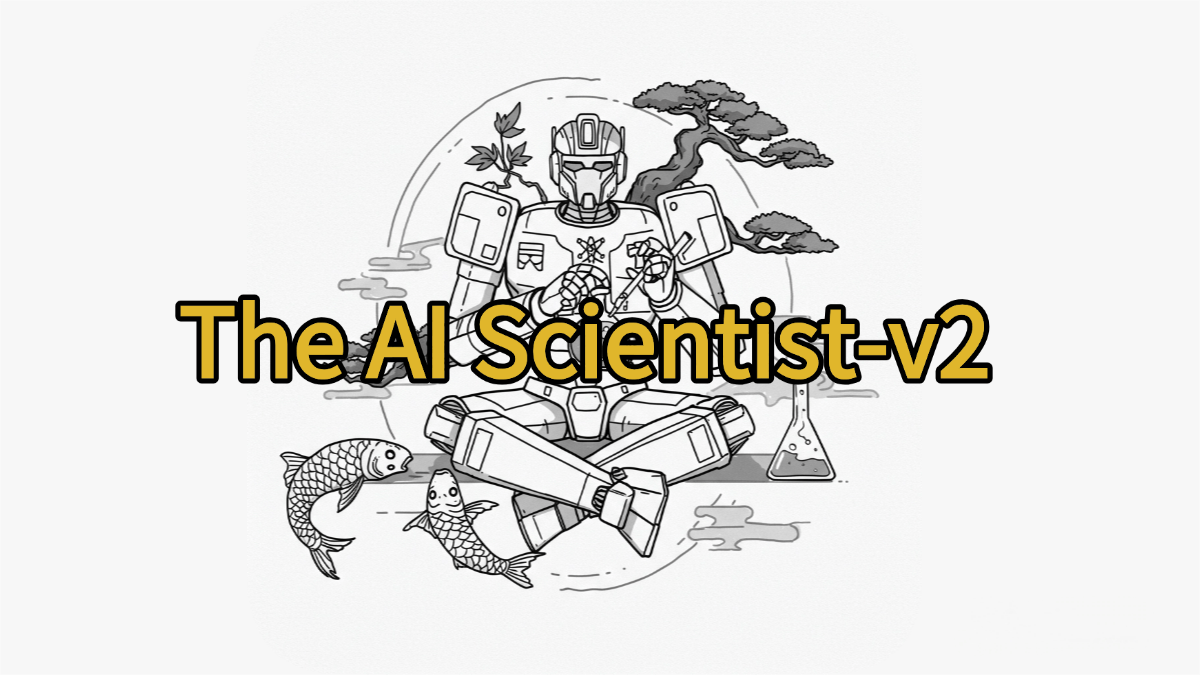The AI Scientist-v2 – A General End-to-End AI System for Automatically Exploring Scientific Hypotheses and Generating Papers
What is The AI Scientist-v2?
The AI Scientist-v2 is an end-to-end AI system for fully automated scientific discovery, jointly developed by Sakana AI, the University of British Columbia, the Vector Institute, and other institutions. It supports autonomously proposing scientific hypotheses, designing and conducting experiments, analyzing data, generating visualization results, and drafting scientific papers. Compared to its predecessor, The AI Scientist-v2 eliminates the reliance on human-written code templates and introduces an agent-based tree search method to systematically explore scientific hypotheses. The AI Scientist-v2 integrates a feedback loop with vision-language models (VLMs) to enhance the quality and clarity of the generated content. Notably, The AI Scientist-v2 successfully generated a fully AI-written paper that passed the peer review of the ICLR 2025 workshop, becoming the first AI system to achieve this milestone.

The main functions of The AI Scientist-v2
- Autonomously propose scientific hypotheses: Generate novel scientific hypotheses, similar to the research directions or questions proposed by human scientists at the initial stage of research.
- Design and execute experiments: Design experimental procedures and carry out experiments, including data collection and processing.
- Data analysis and visualization: Analyze experimental data, generate charts and visual results to aid in understanding the experimental findings.
- Write scientific papers: Compose complete scientific papers, including sections such as abstract, introduction, methods, experimental results, and conclusions.
The Technical Principles of The AI Scientist-v2
- Agent-based Tree Search: The system is based on a novel tree search algorithm, where an Experiment Progress Manager (EPM) manages the experimental process in phases. Each phase has clear objectives and stopping criteria, such as preliminary investigation, hyperparameter tuning, research agenda execution, and ablation studies. The tree search method enables the system to explore multiple experimental paths in parallel, significantly accelerating the process of scientific discovery.
- Visual-Linguistic Model (VLM) Feedback: During the experimentation and paper-writing phases, the system utilizes a VLM to evaluate and provide feedback on the generated charts and text. The VLM can assess the clarity of the charts, the accuracy of the labels, and the consistency of the textual descriptions, ensuring that the generated content is of high quality and scientifically accurate.
- Code Generation and Execution: The system automatically generates experimental code and executes it in a Python interpreter. If errors occur during code execution, the system records the error messages and attempts debugging to ensure the smooth progress of the experiments.
- Data Loading and Processing: The system automatically downloads and loads commonly used datasets using the Hugging Face Hub, streamlining the data processing workflow. Experimental data is saved as structured numpy files for easy subsequent analysis and visualization.
- Multi-Stage Experiment Management: The experiment management agent divides the experimental process into multiple stages, each with clear objectives and evaluation criteria.
The project address of The AI Scientist-v2
- Project official website: https://sakana.ai/ai-scientist-first-publication/
- GitHub repository: https://github.com/SakanaAI/AI-Scientist-v2
- arXiv technical paper: https://pub.sakana.ai/ai-scientist-v2/paper.pdf
Application Scenarios of The AI Scientist-v2
- Scientific Research Automation: Automatically complete the entire process from formulating hypotheses to writing papers, improving research efficiency.
- Machine Learning Research: Quickly generate and validate new algorithms or model improvements, accelerating technological innovation.
- Interdisciplinary Applications: Support research across multiple disciplines, providing innovative solutions to complex problems.
- Education and Training: Serve as a teaching tool to help students and researchers understand scientific research methods.
- Industrial and Commercial Use: Optimize machine learning models to enhance production efficiency and product quality.
Related Posts




